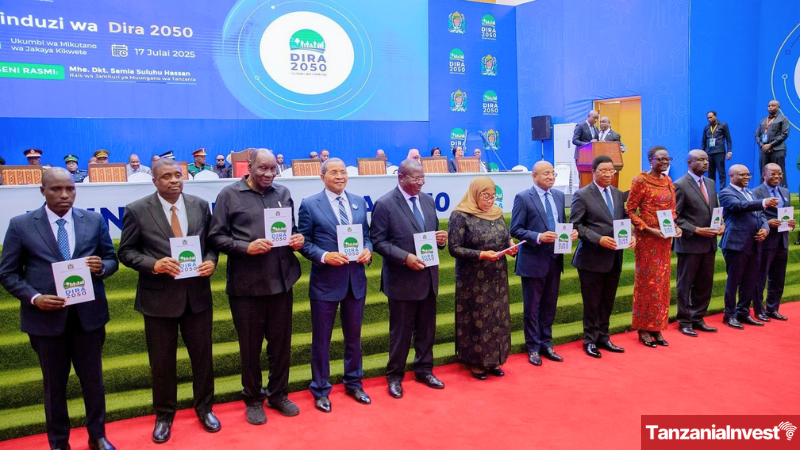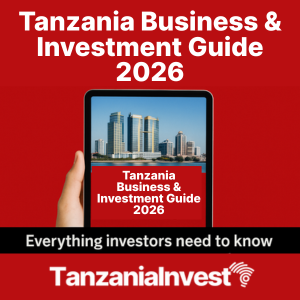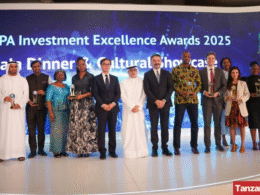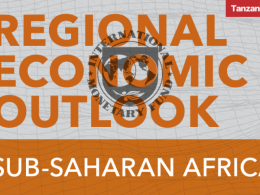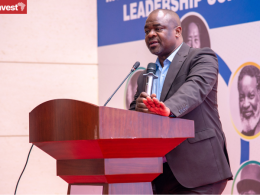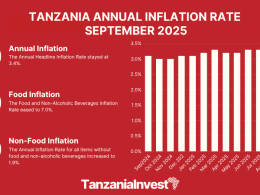On 17 July 2025, President Samia Suluhu Hassan officially launched Tanzania Development Vision 2050 (Dira 2050) in Dodoma, presenting a long-term national development agenda to replace Vision 2025 and transform Tanzania into a high-income, inclusive, and resilient economy by 2050.
The Vision is the result of wide consultations and proposes a strategic shift from factor-driven growth to productivity and innovation-led development.
Table of Contents
- Vision 2050 at a Glance
- Four Strategic Development Goals
- Three Implementation Pillars
- Five Implementation Accelerators
- Nine Priority Transformation Sectors
- Role of Private Sector
- Governance, Monitoring, and Financing
- Remarks from the Official Launch Speech by President Samia
- From Vision 2025 to Vision 2050
- Regional and Global Positioning
Vision 2050 at a Glance
Vision 2050 defines Tanzania’s development path over a 25-year period, with the objective of transitioning to a high-income economy by 2050.
It sets the national GDP target at USD 1 trillion, with GDP per capita of USD 7,000, and aims to eliminate extreme poverty, defined as living below USD 2.15/day.
It anticipates the economy will be driven by a knowledge-based, industrialised, and export-oriented structure.
Vision 2050 targets a life expectancy of 75 years, universal access to clean water, 90% energy access, and 70% digital literacy among the population.
Formal sector employment is expected to exceed 50%, with increased private sector participation and expanded productive capacities across the economy.
Four Strategic Development Goals
Vision 2050 is anchored on four interdependent national goals:
- A Strong, Inclusive, Competitive, and Resilient Economy, driven by domestic productivity, technological advancement, value addition, and global competitiveness. Targets include increasing manufacturing value-addition, expanding exports, deepening financial markets, and reducing dependence on commodity cycles.
- Improved Quality of Life and Wellbeing for All. Prioritises access to quality health care, education, housing, water, nutrition, and social protection. Seeks to reduce child and maternal mortality, eliminate stunting, and improve learning outcomes.
- Sustainable Use and Management of the Environment and Natural Resources. Strengthens environmental governance, promotes clean energy, and builds resilience to climate change and natural shocks. Includes commitments to reduce CO₂ emissions intensity and increase forest cover and protected ecosystems.
- A Digitally Enabled and Globally Competitive Nation. Aims to build a skilled, innovative population by embedding digital technology across sectors. Promotes STEM education, national innovation systems, and universal access to broadband and digital public services.
Three Implementation Pillars
The Vision 2050 rests on three implementation pillars:
- Economic Transformation and Competitiveness. Focuses on enhancing productivity in agriculture, manufacturing, and services; strengthening export performance; increasing public and private investment to at least 30% of GDP; and deepening regional integration. The Vision positions Tanzania to become an economic leader in East Africa and a competitive industrial hub on the African continent.
- Human Capital Development and Social Wellbeing. Aims to build a healthy, educated, skilled, and equitable society. Priorities include universal education through tertiary level, reducing malnutrition and disease burden, investing in youth development, and improving social safety nets. The Vision targets universal access to clean and safe water, aims to raise life expectancy to 75 years, achieve 70% digital literacy, and ensure inclusive service delivery for women, youth, and people with disabilities. These outcomes are intended to create a resilient and productive population that can effectively participate in and benefit from national development.
- Environmental Sustainability and Climate Resilience. Promotes sustainable land use, water security, circular economy models, disaster risk reduction, and climate-smart agriculture. Calls for investment in clean energy, ecological conservation, and community resilience mechanisms.
Five Implementation Accelerators
To support these pillars, the Vision identifies five cross-cutting enablers:
- Integrated Transport Infrastructure. Expand intermodal transport networks including rail, roads, ports, and air to enhance connectivity and trade logistics. Develop strategic corridors, such as the Central and Southern Corridors, and link rural production to urban markets.
- Reliable, Affordable, and Clean Energy. Increase installed power generation capacity from hydropower, solar, wind, and gas, aiming for 90% access by 2050. Strengthen transmission and distribution networks and reduce dependency on biomass fuels.
- Digital Economy and Innovation. Build digital public infrastructure, integrate ICT across governance and business, and promote digital literacy. Expand 4G/5G coverage and encourage digital entrepreneurship among youth and women.
- Science, Technology, and Innovation (STI). Promote investment in STI, local content development, and innovation hubs. Establish technology parks and strengthen linkages between research institutions and industry.
- Research and Development (R&D). Institutionalise national R&D financing mechanisms and integrate evidence-based planning. Focus on strategic sectors such as biotechnology, energy, agriculture, and health.
Nine Priority Transformation Sectors
The Vision identifies the following sectors as central to structural change:
- Agriculture and Agro-Industries. Modernise and commercialise agriculture, increase yields, and expand agro-processing.
- Tourism and Hospitality. Diversify tourism offerings, expand infrastructure, and improve marketing and training.
- Industry and Manufacturing. Increase domestic value addition, develop industrial clusters, and integrate into regional and global value chains.
- Construction. Invest in urban infrastructure, transport, housing, and public works.
- Mining and Extractives. Promote beneficiation, formalise artisanal mining, and expand strategic minerals extraction.
- Blue Economy. Sustainably exploit marine and lake resources, promote aquaculture, and develop port infrastructure.
- Sports and Creative Industries. Commercialise sports, film, music, and cultural products.
- Financial Services. Deepen access to finance, develop capital markets, and promote financial technology.
- Other Services. Include ICT, education, health, logistics, and business services.
Role of Private Sector
Vision 2050 positions the private sector as a central driver of Tanzania’s economic transformation and defines it as an accelerator of change.
In her speech, President Samia emphasised that the implementation of this Vision cannot rely on foreign support alone, and called on domestic investors and companies to take ownership in driving national transformation.
The economy will be driven primarily by private initiative, with the Government transitioning from a regulator to an enabler of business and investment.
The Vision calls for a vibrant, competitive private sector comprising micro, small, medium, and large enterprises, both domestic and foreign-owned, as well as commercial public entities.
It emphasises the importance of ensuring equal participation for women, youth, and people with disabilities in private sector development and entrepreneurship.
A core target of Vision 2050 is for Tanzania to become one of the top three African countries in attracting investment and ease of doing business.
This will be achieved through regulatory reforms, simplification of procedures, elimination of non-productive charges, and strengthening of financial infrastructure.
Challenges facing the private sector are acknowledged, including:
- High costs and significant time required for business registration
- Bureaucracy in daily operations
- Limited access to capital and underdeveloped capital markets
- High interest rates and stringent collateral requirements
- Excessive and overlapping regulation
- Conflicting policies and weak enforcement
- Infrastructure deficits, including unreliable electricity and transport networks
- Skills mismatches in the labour force
- Market dominance by a small group of private actors
- Weak implementation of local investor empowerment policies
- Underperformance of public commercial corporations, leading to unfair competition with private firms
To address these challenges, Vision 2050 proposes reforms to strengthen financial markets, expand innovative financial instruments, and invest in digital financial infrastructure.
It also emphasises formalising informal enterprises and integrating them into national production and value chains.
Public-private partnerships (PPPs) are identified as a central mechanism for delivering strategic infrastructure and services.
However, the Vision notes that the understanding and implementation of PPPs remains limited and proposes efforts to build institutional capacity and create a more enabling framework.
Overall, Vision 2050 views the private sector as a strategic actor in achieving a competitive, inclusive, and resilient economy, with clear policy direction, institutional reforms, and operational frameworks to unlock its full contribution to long-term national development.
It highlights mobile money and fintech as areas of innovation that can expand financial inclusion and support entrepreneurship.
Governance, Monitoring, and Financing
Vision 2050 will be implemented through a 25-year Long-Term Development Master Plan, which will guide cascading frameworks including Five-Year Development Plans (FYDPs), sectoral strategies, and annual budgets.
The National Planning Commission will coordinate the process under the Ministry of Planning and Investment.
Implementation will require aligning national budgets, sector strategies, and subnational plans with Vision 2050 targets.
Monitoring and Evaluation (M&E) will be performance-based, with a national dashboard of Key Performance Indicators (KPIs) for each ministry and sector.
All government institutions are required to review their policies to align with Vision 2050 by July 2026.
The Vision also introduces a Results-Based Management (RBM) approach and strengthens the national statistical system for evidence-based policymaking.
Private sector engagement will be enhanced through reforms in the business environment, public-private partnerships (PPPs), and sector-specific investment incentives.
Local governments will be empowered to align service delivery with Vision objectives through decentralised planning and performance contracts.
Remarks from the Official Launch Speech by President Samia
In her official address at the launch of Vision 2050, President Samia Suluhu Hassan stated: “Vision 2050 is not a government document. It is a national vision. It reflects the dreams, aspirations, and commitments of all Tanzanians.”
She emphasised execution over declarations: “Let this Vision not gather dust like many past plans. Let us hold each other accountable—government, private sector, and civil society—for its implementation.”
Addressing young people, she added: “This Vision belongs to you. It is your future we are planning for. Get ready to drive the change.”
The President instructed all ministries to submit aligned sector strategies within 12 months and proposed the introduction of a National Vision Delivery Unit to coordinate implementation and public accountability.
From Vision 2025 to Vision 2050
Vision 2025 was launched in 2000 and aimed to transform Tanzania into a middle-income, semi-industrialised economy.
Achievements include GDP growth averaging 6.2%, lower-middle-income status reached in 2020, improved infrastructure, and expanded access to basic services.
However, key targets—such as GDP per capita of USD 3,000—were not achieved. Poverty and informality remained high, structural transformation was slow, and implementation was hindered by institutional weaknesses.
Vision 2050 incorporates lessons by reinforcing monitoring mechanisms, emphasising accountability, and placing private sector-led growth at the centre of the agenda.
Regional and Global Positioning
Vision 2050 is aligned with the UN Sustainable Development Goals (SDGs), the African Union Agenda 2063, and the East African Community (EAC) Vision 2050.
It positions Tanzania as a strategic hub in regional trade, digital innovation, and green industrialisation.
The Vision anticipates global megatrends such as digital disruption, energy transition, climate risk, and a multipolar world economy.
It maintains Tanzania’s non-aligned foreign policy while strengthening regional integration and economic diplomacy.





